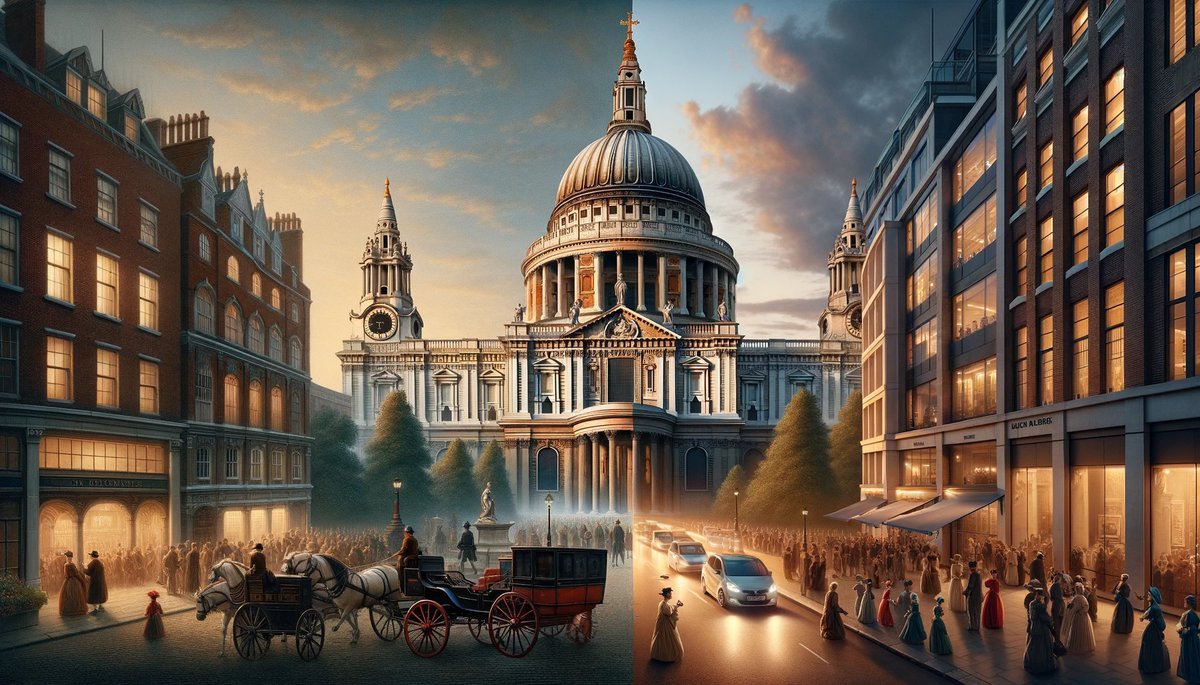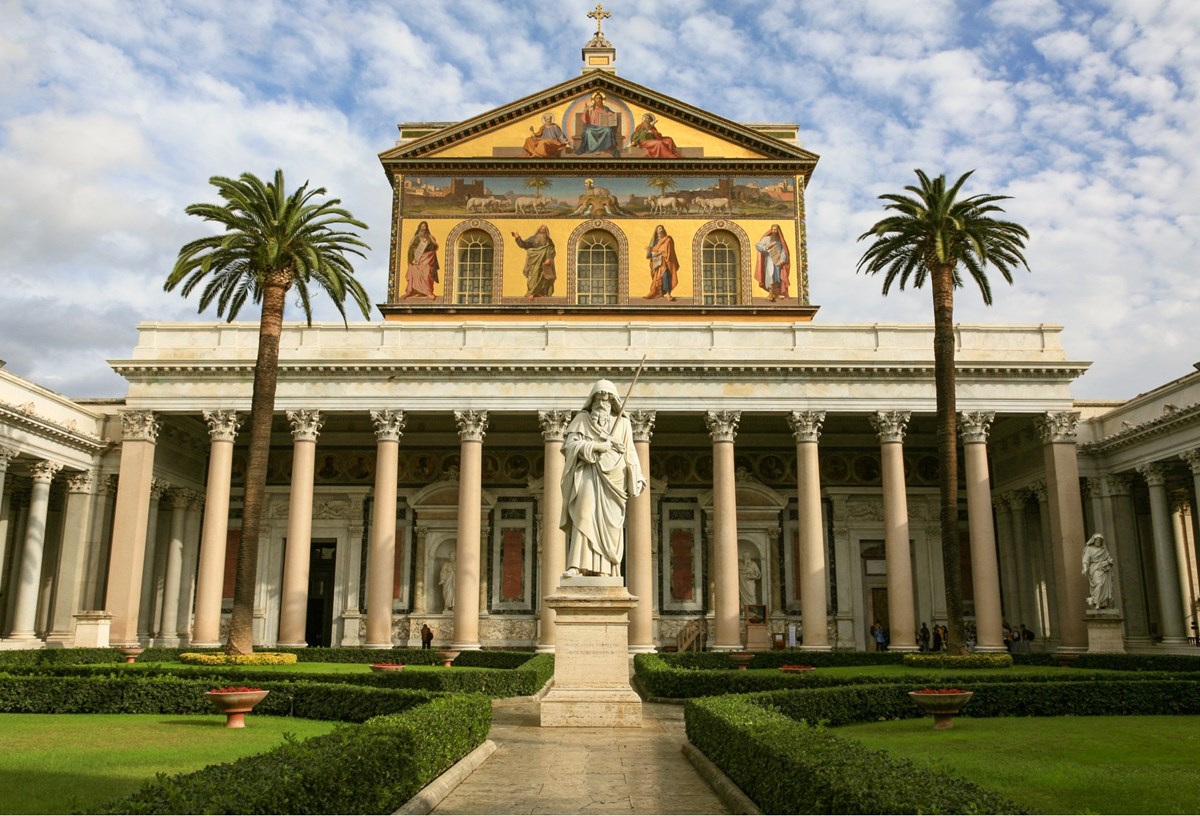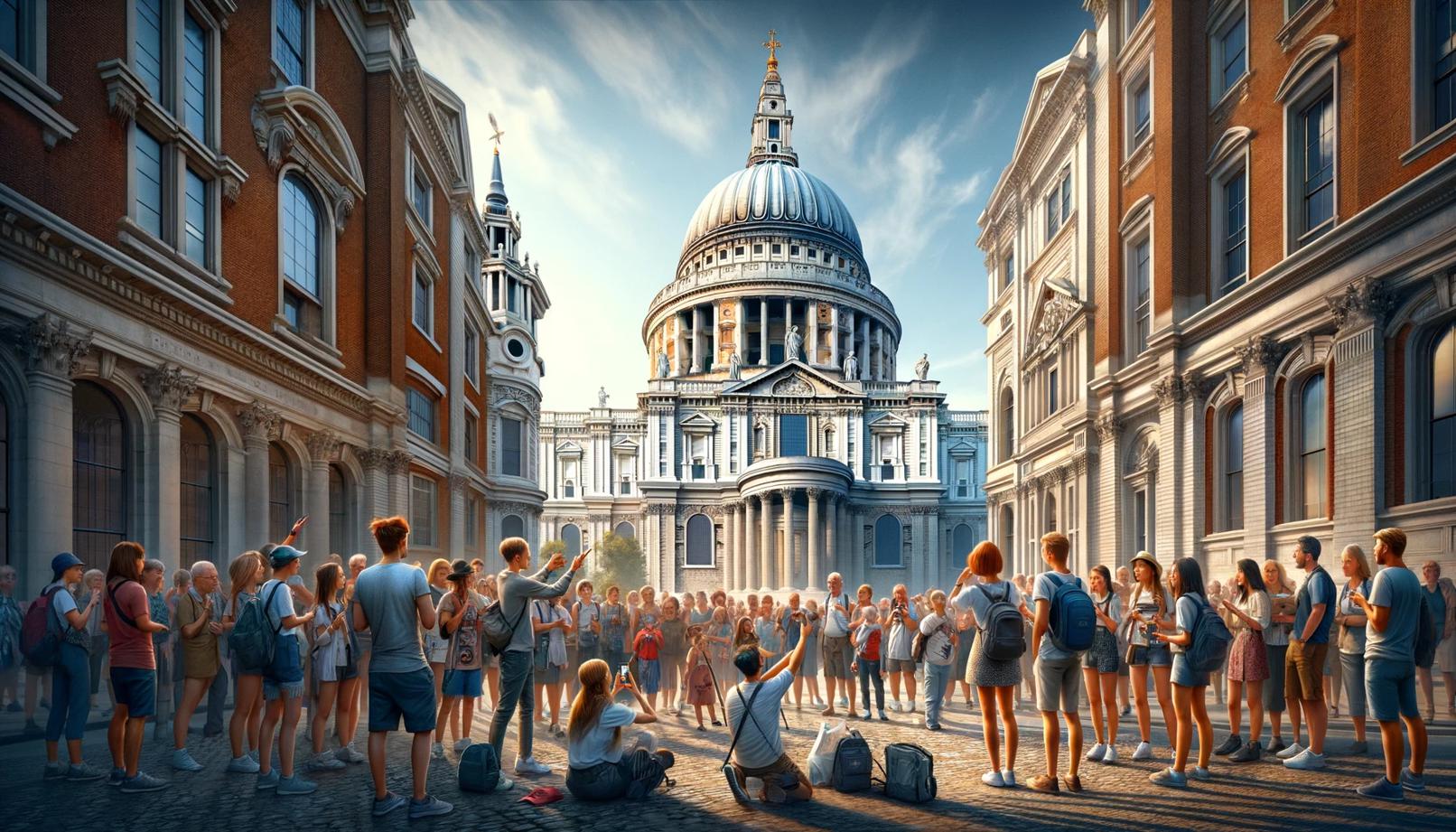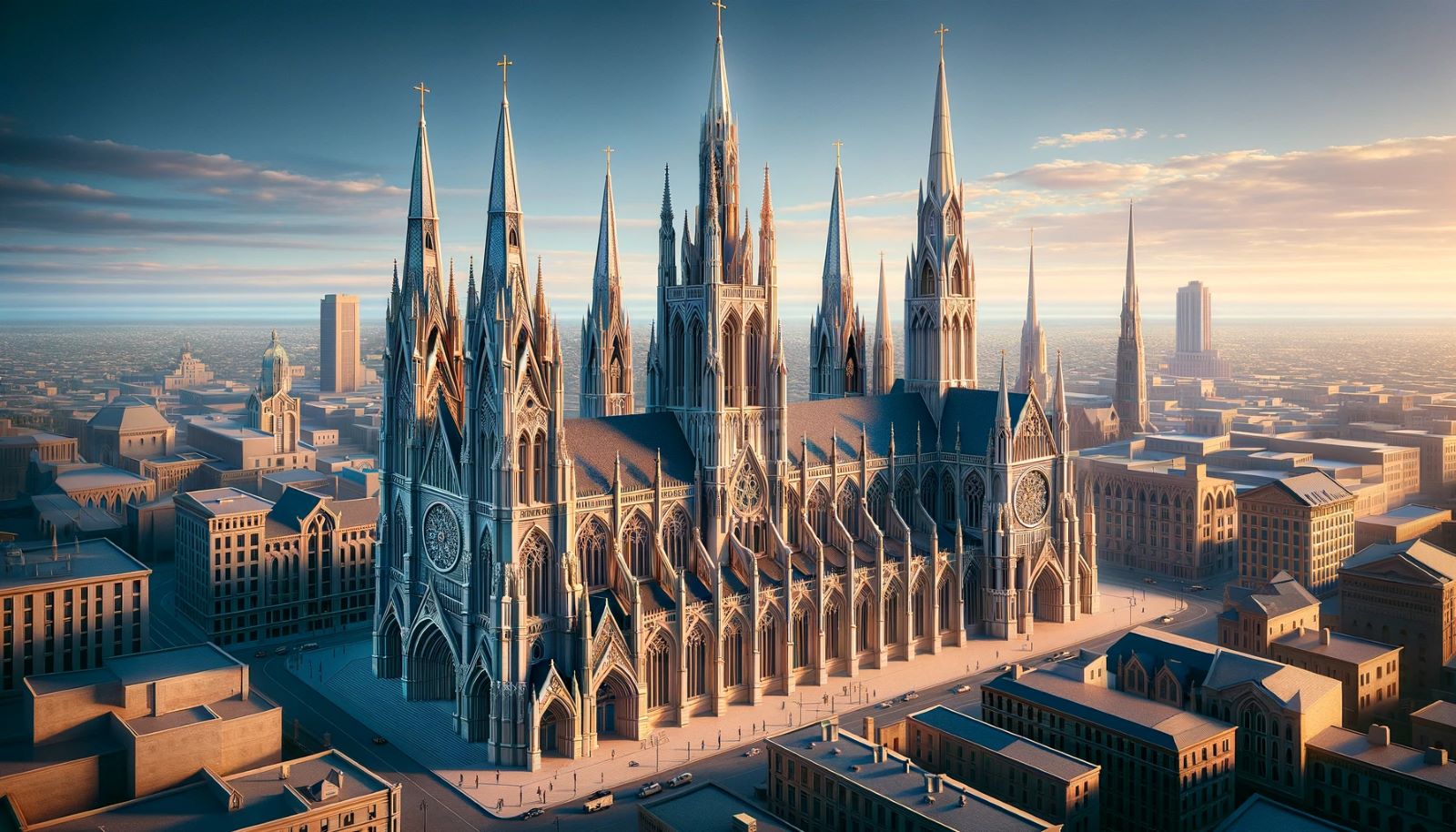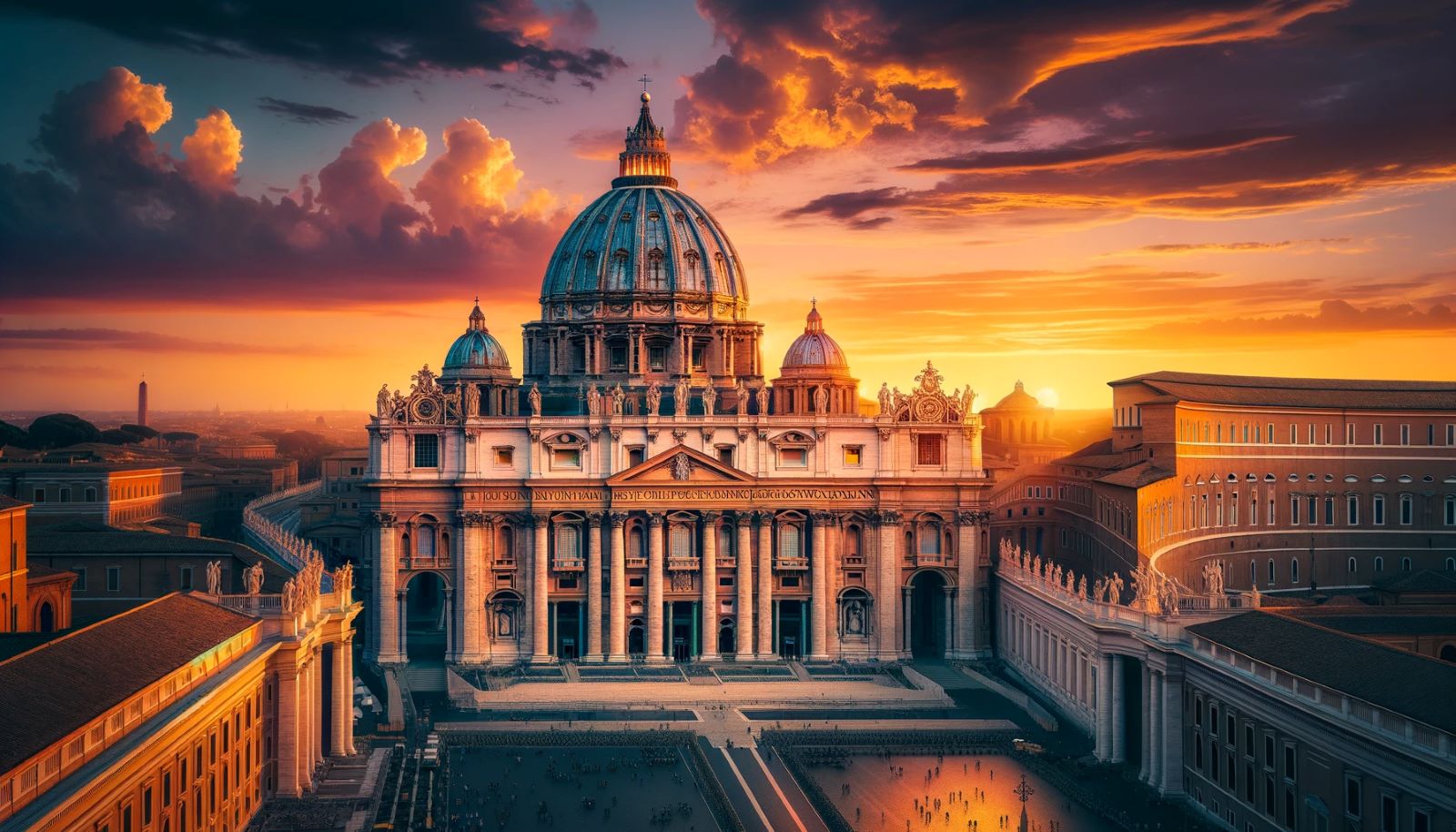Home>Arts and Culture>Where Is St. Paul’s Cathedral, London


Arts and Culture
Where Is St. Paul’s Cathedral, London
Published: February 17, 2024
Ericka Andersen, an editor at Christian.net, expertly merges digital strategy with content creation, focusing on faith and societal issues. Her communication skills enhance the platform's engaging narratives, fostering meaningful dialogue on belief's impact on society.
Discover the iconic St. Paul's Cathedral in London, a must-see for arts and culture enthusiasts. Explore its rich history and breathtaking architecture.
(Many of the links in this article redirect to a specific reviewed product. Your purchase of these products through affiliate links helps to generate commission for Christian.net, at no extra cost. Learn more)
Table of Contents
Introduction
St. Paul's Cathedral, an iconic symbol of London's skyline, stands as a testament to the city's rich history and architectural grandeur. This magnificent structure, with its awe-inspiring dome and imposing presence, has been a focal point of the city for centuries, drawing visitors from around the world to marvel at its beauty and significance.
As one of the most recognizable landmarks in London, St. Paul's Cathedral holds a special place in the hearts of both locals and tourists. Its historical and cultural importance, coupled with its stunning architectural features, make it a must-visit destination for anyone seeking to immerse themselves in the rich tapestry of London's past and present.
From the moment one sets eyes on the cathedral's imposing facade, it becomes evident that St. Paul's is not merely a building; it is a living, breathing embodiment of London's resilience, endurance, and artistic prowess. Whether viewed from afar, with its dome soaring into the sky, or experienced up close, with its intricate details and ornate carvings, St. Paul's Cathedral never fails to leave a lasting impression on all who encounter it.
This article aims to delve into the captivating history, architectural marvels, and cultural significance of St. Paul's Cathedral, offering readers a comprehensive exploration of this beloved London landmark. Join us on a journey through time and artistry as we uncover the allure and splendor of St. Paul's Cathedral, a true jewel in London's crown.
History of St. Paul's Cathedral
St. Paul's Cathedral has stood as a symbol of London's resilience and endurance for over 1,400 years. The story of this iconic structure begins in the 7th century when the first St. Paul's Cathedral was founded. However, it was not until the 17th century that the cathedral as we know it today began to take shape.
The Great Fire of London in 1666 ravaged the city, leaving St. Paul's Cathedral in ruins. Sir Christopher Wren, a renowned architect, was tasked with the monumental challenge of rebuilding the cathedral. Wren envisioned a grand structure that would not only serve as a place of worship but also stand as a testament to the city's rebirth and resilience.
The construction of the new St. Paul's Cathedral commenced in 1675 and spanned over four decades. Wren's vision came to life in the form of a magnificent Baroque-style cathedral, adorned with exquisite carvings, majestic domes, and a breathtaking interior. The cathedral's iconic dome, which rises to a height of 365 feet, became a symbol of hope and inspiration for Londoners.
Throughout its history, St. Paul's Cathedral has been the backdrop for numerous historic events, including the funerals of distinguished figures such as Sir Winston Churchill and the Duke of Wellington. It has also hosted national celebrations, royal weddings, and special services, solidifying its place in the annals of British history.
Today, St. Paul's Cathedral continues to stand as a beacon of faith, art, and history, welcoming visitors from across the globe to marvel at its architectural splendor and immerse themselves in its rich heritage. The cathedral's history is a testament to London's enduring spirit and its ability to rise from the ashes, making it a cherished symbol of the city's past, present, and future.
Architecture and Design
The architecture and design of St. Paul's Cathedral stand as a testament to the genius of Sir Christopher Wren and the enduring legacy of Baroque style. The cathedral's exterior is a marvel of intricate carvings, imposing columns, and a stunning dome that dominates the London skyline. As one approaches the cathedral, the grandeur of its facade becomes increasingly apparent, with its imposing presence and meticulous attention to detail.
The iconic dome of St. Paul's Cathedral is a masterpiece of engineering and aesthetics. Rising to a height of 365 feet, it is one of the largest cathedral domes in the world. The outer dome is constructed of lead, creating a striking silhouette against the sky. Visitors can ascend to the Golden Gallery, located at the top of the dome, to enjoy panoramic views of London, a testament to Wren's architectural prowess.
The interior of St. Paul's Cathedral is equally breathtaking, with a sense of grandeur that is both awe-inspiring and humbling. The nave, adorned with ornate carvings and majestic arches, leads the eye toward the high altar, creating a sense of reverence and tranquility. The intricate mosaics, elegant marble work, and exquisite stained glass windows further elevate the cathedral's interior, inviting visitors to marvel at the fusion of art and faith.
The Whispering Gallery, located within the dome, offers a unique acoustic experience, allowing whispers to travel along its curved walls. This architectural marvel showcases Wren's ingenuity and attention to detail, adding a touch of wonder to the cathedral's design.
The cathedral's exterior is adorned with sculptures, including the famous statues of saints and apostles, each intricately carved to convey a sense of grace and serenity. The imposing west front, with its grand portico and impressive steps, serves as a fitting prelude to the splendor that awaits within.
St. Paul's Cathedral's architecture and design embody the Baroque style, characterized by its ornate embellishments, dramatic use of light and shadow, and a sense of theatricality. The interplay of light and space within the cathedral creates a transcendent atmosphere, inviting contemplation and reflection.
In essence, St. Paul's Cathedral stands as a timeless masterpiece, a harmonious blend of architectural innovation, artistic expression, and spiritual significance. Its design continues to inspire and captivate visitors, offering a glimpse into the profound beauty and ingenuity of human creativity.
Famous Events and Ceremonies
St. Paul's Cathedral has been the hallowed setting for a myriad of historic events and solemn ceremonies, each imbued with profound significance and cultural resonance. From royal weddings to state funerals, the cathedral has borne witness to moments that have shaped the course of British history and captured the collective imagination of the world.
One of the most notable events in the cathedral's history was the magnificent wedding of Prince Charles and Lady Diana Spencer in 1981. The grandeur of St. Paul's provided a breathtaking backdrop for this iconic union, as the world watched in awe. The ceremony, steeped in tradition and pageantry, unfolded within the cathedral's sacred confines, forever etching this momentous occasion into the annals of British royalty.
St. Paul's Cathedral has also been the solemn setting for state funerals of eminent figures, honoring their indelible contributions to the nation. The funeral of Sir Winston Churchill, the revered wartime leader, was a poignant and dignified affair held at the cathedral. The nation bid farewell to a towering figure of history amidst the resplendent grandeur of St. Paul's, underscoring the cathedral's role as a custodian of national memory and reverence.
In addition to these historic events, the cathedral has hosted numerous national commemorations and celebrations, serving as a unifying symbol for the British people. From jubilant thanksgiving services marking significant milestones to poignant remembrance ceremonies honoring the sacrifices of the fallen, St. Paul's Cathedral has provided a sacred space for collective reflection and unity.
The annual St. Paul's Day service, held on the feast day of the cathedral's patron saint, is a cherished tradition that brings together clergy, dignitaries, and the public in a joyous celebration of faith and community. This time-honored ceremony underscores the enduring role of St. Paul's as a spiritual and cultural touchstone, fostering a sense of continuity and shared heritage.
These events and ceremonies, woven into the fabric of St. Paul's Cathedral's legacy, embody the intertwining of history, tradition, and national identity. They serve as poignant reminders of the cathedral's enduring significance, transcending time and space to leave an indelible mark on the collective consciousness of all who pass through its hallowed halls.
Location and How to Get There
St. Paul's Cathedral, an architectural marvel nestled in the heart of London, occupies a prime location that is easily accessible to visitors from across the city and beyond. Situated atop Ludgate Hill, the highest point in the City of London, the cathedral commands a commanding presence, offering panoramic views of the surrounding urban landscape.
Visitors to St. Paul's Cathedral have a myriad of transportation options at their disposal, ensuring convenient and hassle-free access to this iconic landmark. For those opting for public transportation, the cathedral is well served by several London Underground stations, including St. Paul's, Mansion House, and Blackfriars, all of which are within walking distance. These stations provide seamless connections to various parts of the city, making it effortless for visitors to incorporate a visit to St. Paul's into their London itinerary.
Additionally, the cathedral is easily accessible by bus, with multiple routes passing through the surrounding area. This offers a convenient travel option for those who prefer to take in the sights of London while en route to their destination. The well-connected network of bus routes ensures that visitors can reach St. Paul's Cathedral from virtually any corner of the city, enhancing accessibility for both locals and tourists.
For those who prefer to explore London on foot, the cathedral's central location makes it an ideal focal point for a leisurely stroll through the historic streets of the city. Its proximity to other renowned landmarks, such as the Millennium Bridge, Tate Modern, and the bustling River Thames, makes it a natural inclusion in a walking tour of London's cultural and architectural treasures.
Furthermore, St. Paul's Cathedral is easily accessible by bicycle, with designated cycling routes leading to the cathedral precinct. Cycling enthusiasts can enjoy a scenic ride through the city, culminating in a visit to this iconic site. The cathedral's proximity to cycle-friendly paths and lanes underscores its accessibility to eco-conscious travelers seeking sustainable modes of transportation.
In essence, St. Paul's Cathedral's central location and accessibility via various modes of transportation make it a welcoming and easily reachable destination for visitors. Whether arriving by underground, bus, foot, or bicycle, the journey to this architectural masterpiece is as seamless and enjoyable as the experience that awaits within its hallowed walls.
Visiting St. Paul's Cathedral
Visiting St. Paul's Cathedral is an immersive journey into history, art, and spirituality, offering visitors a profound and enriching experience. As one approaches the cathedral, the sheer grandeur of its imposing facade and the iconic dome soaring into the sky create a sense of anticipation and wonder. Whether it's a first-time visitor or a returning enthusiast, the allure of St. Paul's Cathedral never fails to captivate the imagination.
Upon entering the cathedral, visitors are greeted by a sanctuary of tranquility and beauty. The awe-inspiring interior, adorned with intricate carvings, majestic arches, and elegant marble work, invites contemplation and reverence. The play of light filtering through the stained glass windows creates a mesmerizing interplay of colors, infusing the space with a sense of ethereal serenity.
Exploring the cathedral's interior reveals a treasure trove of artistic and architectural marvels. The Whispering Gallery, nestled within the iconic dome, offers a unique acoustic experience, allowing whispers to travel along its curved walls. Ascending further to the Golden Gallery rewards visitors with breathtaking panoramic views of London, a testament to the cathedral's timeless allure and the genius of Sir Christopher Wren's design.
Guided tours provide invaluable insights into the cathedral's rich history, highlighting its role in shaping the cultural and spiritual landscape of London. Visitors can delve into the stories behind the intricate mosaics, the symbolism of the sculptures, and the significance of the cathedral's various chapels and memorials. The crypt, resting place of notable figures and adorned with poignant tributes, offers a poignant glimpse into the cathedral's profound connection to the city's past and present.
Attending a service at St. Paul's Cathedral is a deeply moving experience, allowing visitors to partake in the cathedral's living tradition of worship and contemplation. The harmonious blend of choral music, timeless rituals, and the cathedral's sacred ambiance creates a transcendent atmosphere, fostering a sense of spiritual renewal and connection.
Before concluding their visit, guests can explore the cathedral's gift shop, where a curated selection of souvenirs, books, and mementos awaits. From exquisite replicas of architectural details to insightful publications on the cathedral's history, these offerings serve as cherished reminders of a memorable visit to this iconic landmark.
In essence, visiting St. Paul's Cathedral is a transformative experience, offering a profound encounter with art, history, and faith. Whether drawn by its architectural splendor, historical significance, or spiritual resonance, every visitor departs with a deeper appreciation for this timeless symbol of London's enduring spirit and cultural legacy.
Conclusion
In conclusion, St. Paul's Cathedral stands as a timeless testament to the indomitable spirit of London, encapsulating centuries of history, architectural brilliance, and cultural significance within its hallowed walls. From its humble origins in the 7th century to its rebirth following the Great Fire of London, the cathedral has weathered the tides of time, emerging as an enduring symbol of resilience and renewal.
The captivating history of St. Paul's Cathedral, intertwined with the annals of British history, serves as a poignant reminder of the city's ability to rise from adversity and rebuild with unwavering determination. Sir Christopher Wren's visionary design, brought to life in the form of the cathedral's awe-inspiring architecture, continues to inspire awe and admiration, drawing visitors from across the globe to marvel at its grandeur.
The cathedral's role as a backdrop for historic events and solemn ceremonies, from royal weddings to state funerals, underscores its profound cultural resonance and its place in the collective consciousness of the nation. Each event held within its sacred confines adds another layer to the rich tapestry of its legacy, weaving together moments of joy, sorrow, and national unity.
Located at the heart of London, St. Paul's Cathedral beckons visitors from near and far, offering a sanctuary of tranquility and beauty amidst the bustling urban landscape. Its accessibility via various modes of transportation ensures that all who wish to experience its splendor can do so with ease, further cementing its status as a cherished cultural landmark.
Visiting St. Paul's Cathedral is an immersive journey into history, art, and spirituality, inviting guests to partake in its living tradition of worship and contemplation. The cathedral's interior, adorned with intricate carvings, elegant marble work, and resplendent stained glass, creates an atmosphere of profound reverence and wonder, leaving an indelible impression on all who cross its threshold.
In essence, St. Paul's Cathedral transcends its role as a mere architectural marvel; it is a living embodiment of London's enduring legacy, a testament to the city's ability to blend the past with the present and inspire future generations. Whether viewed from afar, explored within, or simply admired from the streets of London, the cathedral stands as a timeless beacon of faith, art, and history, inviting all to partake in its timeless allure and immerse themselves in the rich tapestry of its legacy.



